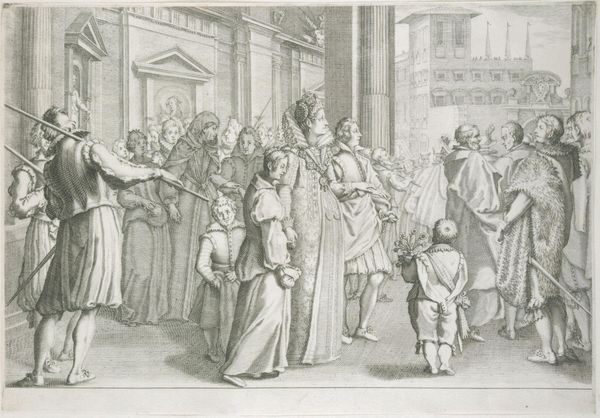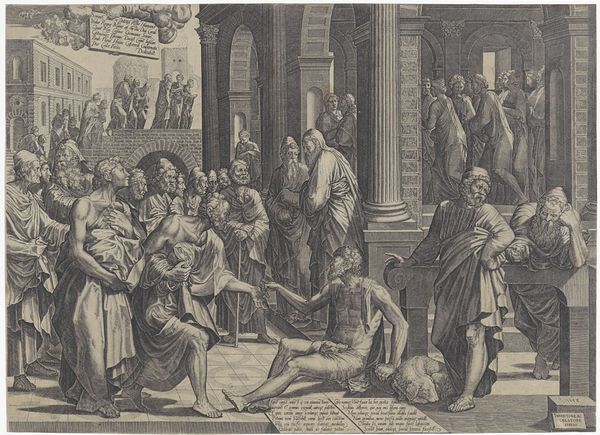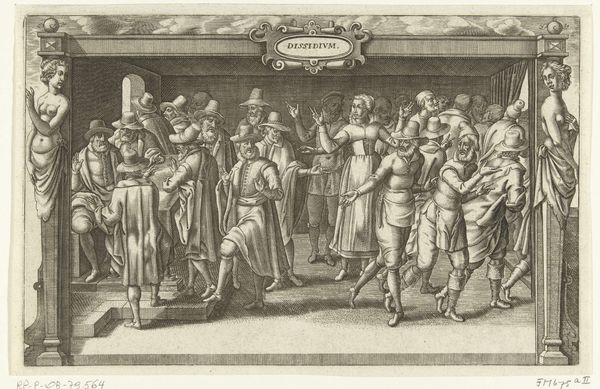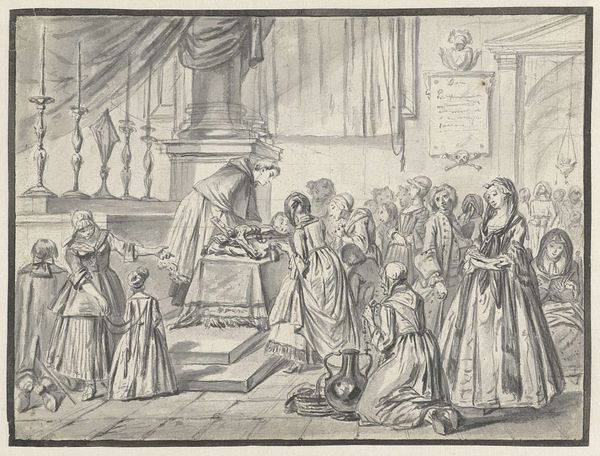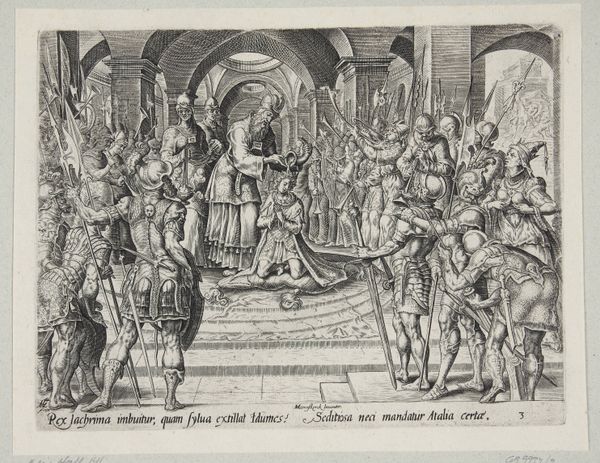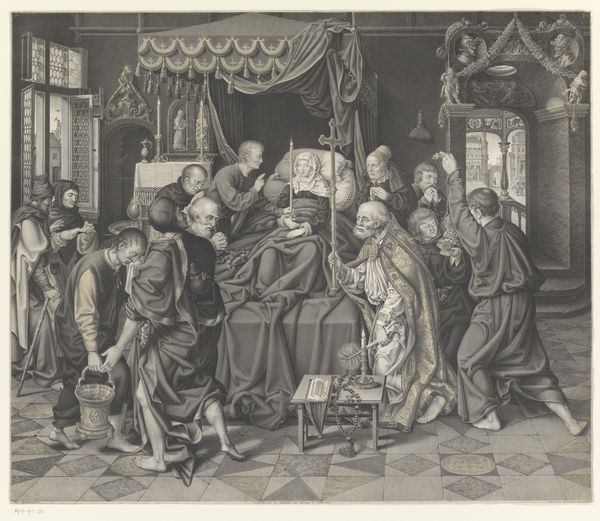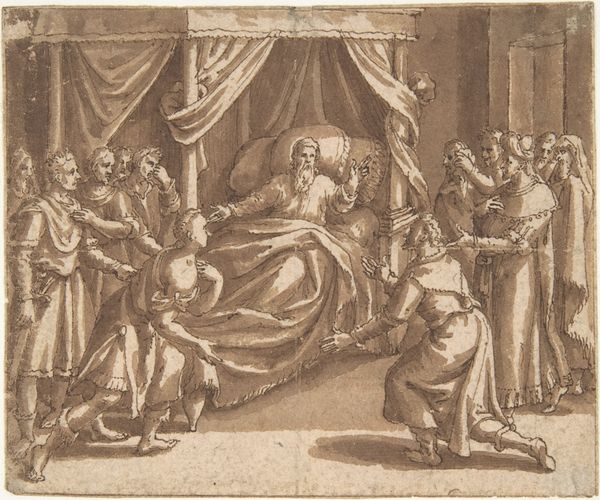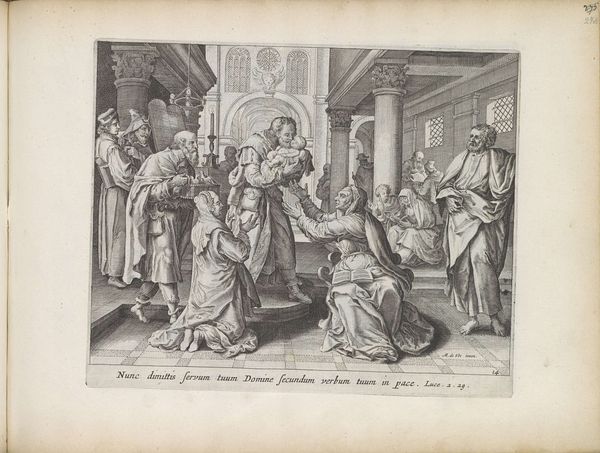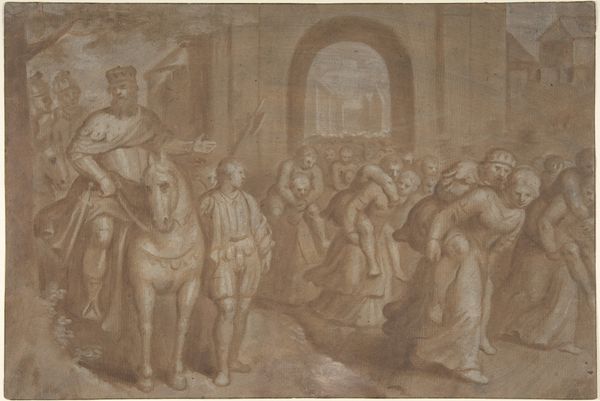
engraving
#
narrative-art
#
baroque
#
dutch-golden-age
#
figuration
#
history-painting
#
engraving
Dimensions: width 664 mm, height 425 mm
Copyright: Rijks Museum: Open Domain
Curator: "Salomo ontvangt de koningin van Seba", or "Solomon Receives the Queen of Sheba", is an engraving crafted in 1621 by Nicolaes de Bruyn, and it's currently held at the Rijksmuseum. Editor: Right away, it strikes me as this carefully arranged tableau, like everyone's posing. There's a regal solemnity, almost a stage-like quality. I mean, all those lion statues—someone was trying to make a point, no? Curator: The artist definitely wanted to evoke power and wisdom. The figure of Solomon enthroned, surrounded by advisors and these majestic lion statues, references his renowned judgment and diplomatic prowess. The Queen's visit was, of course, loaded with political and economic significance. Editor: And all those faces...it feels so crowded! Almost like a royal audience, but where the drama's dialled down, everyone trying to act casual amidst monumental stuff. And everyone wearing a funny hat...were they? Curator: Well, the attire reflects 17th-century interpretations of biblical finery. These garments are intended to impress and denote status within their court. Notice, though, the Queen of Sheba is foregrounded, yet she inclines with respect toward Solomon, positioned much higher and centrally, bathed in light as the engraving leads the viewer there. The contrast of her gesture, humble respect, against her expected splendour carries emotional weight. Editor: Right, a performative act of submission, or deference. This hierarchy is made ever more obvious in contrast to this crowd. Is this to illustrate the artist's worldview at the time? The balance, order. Was this some way to explore political power back then? Or something to just simply remember history? Curator: Definitely. It touches upon not only historical narrative but explores authority, piety, and cross-cultural exchanges as points for broader discourse. The work's baroque styling further reinforces the grandeur and magnificence attributed to Solomon’s court. But its presence in 17th-century Netherlands adds another layer...an aspiring Empire. The messages about trade and relationships would have echoed loudly within a merchantilist society. Editor: Hmmm...makes one rethink a piece. So what seemed posed, formal and staid to me a moment ago reveals a narrative that isn't about an event but really the story that they wanted you to remember about it. I get a deeper resonance in this engraving. Curator: Precisely, looking closer uncovers so much more.
Comments
No comments
Be the first to comment and join the conversation on the ultimate creative platform.

